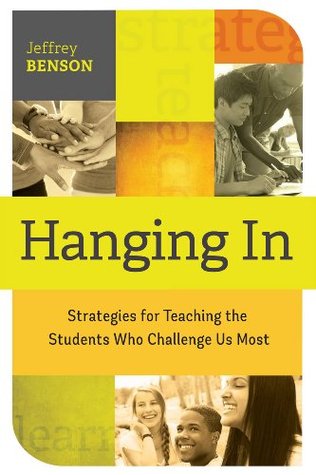More on this book
Kindle Notes & Highlights
Read between
August 24, 2017 - February 3, 2019
Bond with students who require more distance over a shared expectation that they pass the course.
we are seeking academic mastery, and they may be concerned with survival.
Start with what students can do successfully and stretch the expectations.
Stand still; don't experiment every day with a different method.
Discuss your understanding of professional boundaries and the variety of ways to work within those boundaries.
Review the protocols for working with students who have experienced sexual abuse listed earlier in this chapter.
Pool ideas, insights, and information that students have shared about what helps them most.
comma that is often known as the Oxford comma, well discussed in Lynne Truss's Eats, Shoots & Leaves (2004).
she accepted Lou for who she was that day. That is good advice across the board during the hardest moments with challenging students.
These challenging students self-destructively exaggerate the gap between themselves and their peers, which leads them to despair that they could ever bridge it. They do not see a continuum of skills, only that they are flawed and others aren't.
Sometimes perfectionism becomes so extreme it is better described as severe obsessive-compulsive disorder,
For many challenging students, learning seems to happen when cognitive development is untethered from the institution of large schools.
Mainstreaming and "least-restrictive environment" are imperatives for democratic inclusion, but the inevitable practices, limitations, and sheer size of our mainstream schools may never work for a portion of our children.
Our work with challenging students requires that we shield them from their worst tendencies until those can be mastered. Sometimes I think the students are like the balls going through a pinball machine, with graduation the result of a successful run through all the obstacles.
Help students manage their worst perfectionistic tendencies, keeping in mind that the problem may be greater than any single intervention.
Provide alternatives to tests.
Protect transgendered students from bullying, abuse, and physical attacks.
Richard Brautigan: "My teachers could easily have ridden with Jesse James for all the time they stole from me."
Dewey spoke of good teachers using "devices of art" to ameliorate the "brutal features" of the curriculum (1938, p. 19).
Even your best lesson plan may not capture the engagement of a student who is struggling to find a reason to do the work. Here are some approaches that may open the pathway for that student on a given day.
Approaches based on a student's knowledge and skills:
Help each challenging student find the moments in the assignments that speak to his or her quirky way of thinking—"Katerina,
Challenging students need to find and refind their identity as thinkers in the work we ask them to do.
Find delight in students who ask "Why?" and honestly answer the question from their perspective.
Provide time and resources when a challenging student finds a connection.
Develop lesson plan templates that ask for more than listing the required standard addressed in the lesson.
Provide teachers with summaries of IEPs,
groundbreaking work on conflict resolution, Getting to Yes, Fisher, Ury, and Patton (1991) urge us to examine the "bedrock concerns which motivate all people" (p. 48), including security, a sense of belonging, recognition, and control over one's life,
How to Make Temporary Exceptions
consider three criteria for making temporary exceptions
Is it in the best interest of the individual?
John Dewey (1938) wrote, "The belief that all genuine education comes about through experience does not mean that all experiences are genuinely or equally educative"
we must consciously choose the lesson that is most teachable and worthwhile in the moment. In that moment,
Do we have the resources to carry out a different plan?
Can the plan be done safely within the community?
Peter Elbow (1986) writes, "We have an obligation to students but we also have an obligation to society…. Our loyalty to students asks us to be their allies and hosts as we instruct and share…. Our commitment to society asks us to be guardians or bouncers"
There are no guarantees when we accommodate; unfortunately, we often expect an implicit quid pro quo.
Keep the risk small, so the learning and relationship building is not overwhelmed by what the student may or may not do.
Be aware of the accommodations you are making because you are deciding to make them.
If the student fulfills the expectation, let the volume of your praise match the action.
If the student fails to follow through, keep the lecture brief about the disappointment you feel.
Let students know when you are making an accommodation for them.
Tell the student how much time you have to be with him for a task.
Seek quality of work over quantity.
Find the edge of trust with each student.
Stand firm with rules and help the student find a way to comply.
a differentiated school, where the potential in every element of the environment and curriculum is considered for its effect on student success.
the importance of how we say good-bye.
"Adaptation to [a] climate of constant danger requires a state of constant alertness"


